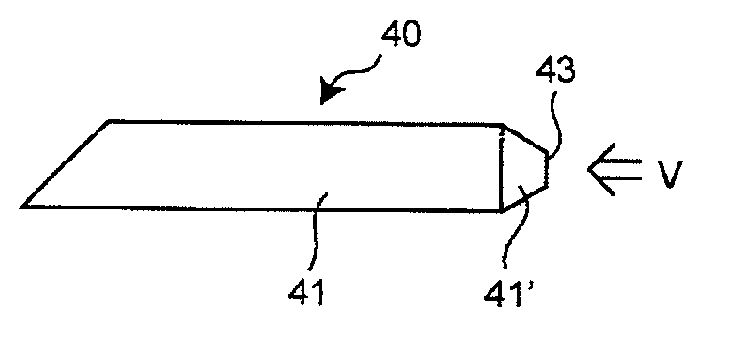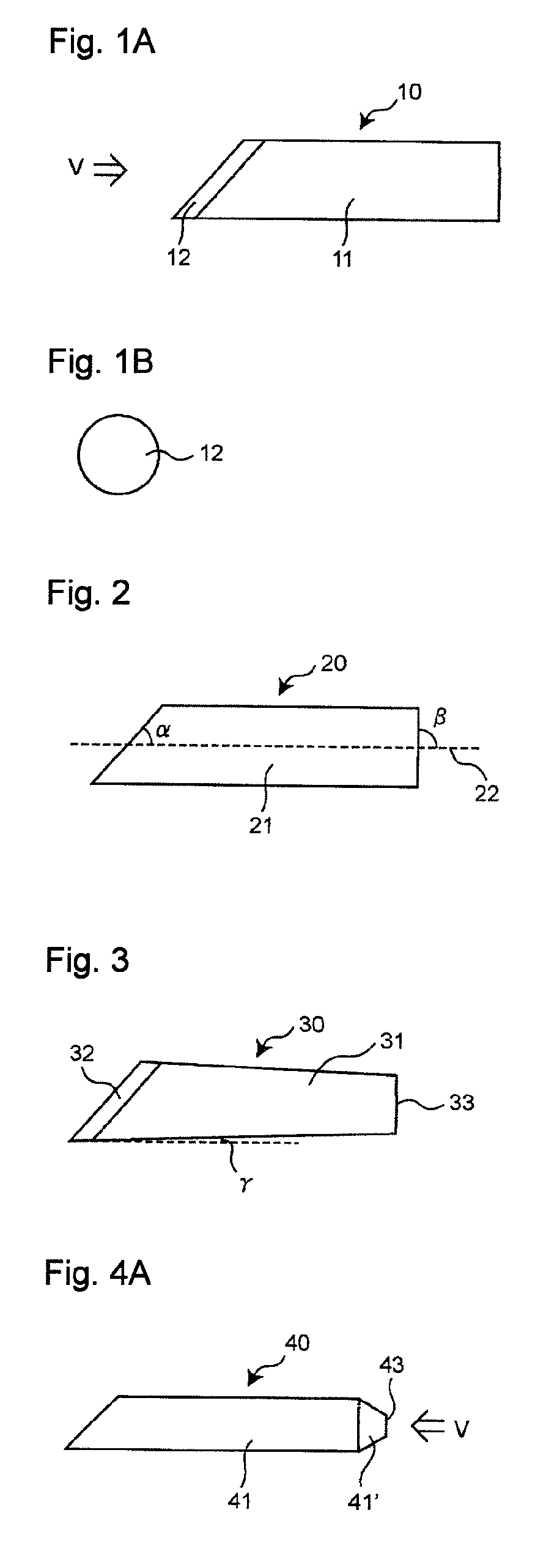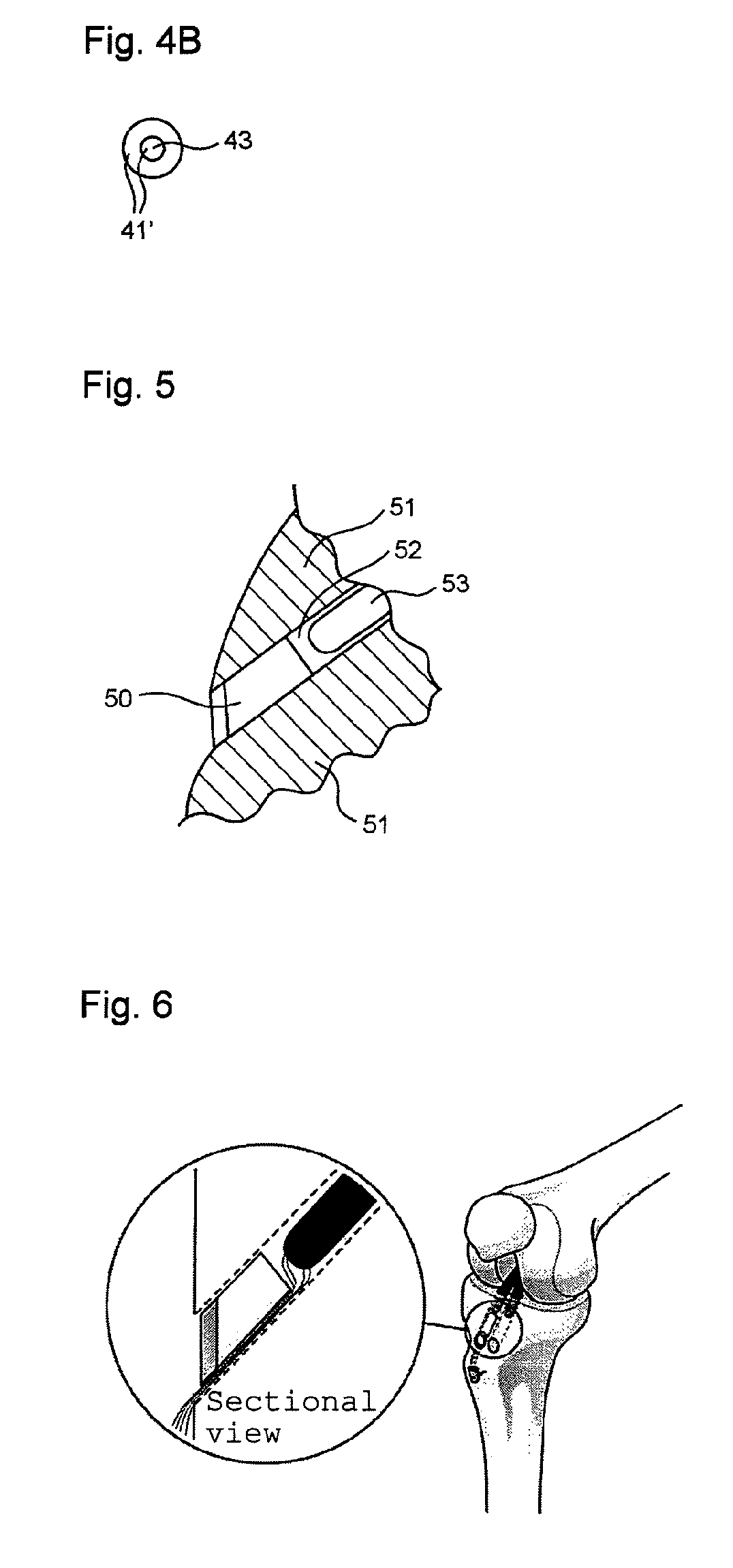Plug components for bone tunnel
a bone tunnel and component technology, applied in the field of plug components, can solve the problems of less likely spontaneous recovery of ligaments or tendons, joint pain and restriction of physical activity, and tendons are liable to sustain damage, so as to associated risks, reduce the risk of infection, and the effect of high risk
- Summary
- Abstract
- Description
- Claims
- Application Information
AI Technical Summary
Benefits of technology
Problems solved by technology
Method used
Image
Examples
example 1
[0066]A bone substitute prosthetic material shown in FIG. 1 was used in surgery for human knee anterior cruciate ligament reconstruction. Into a bone tunnel (diameter: 6 mm, length: 30 mm), which was formed in the tibia in a direction from the outside of the knee joint toward an anterior cruciate ligament attachment site in the knee joint at an angle of 45 degrees to the axis of the tibia, an autogenous semitendinosus tendon was folded in four was inserted such that a joint-side part of the bone tunnel (length: 15 mm) was filled with the tendon. Then, a defect (length: 15 mm) remaining in the bone tunnel was filled with an artificial bone prosthetic material according to the present invention (diameter: 6 mm, length: 15 mm) having a 3 mm-thick bottom surface prepared from a hydroxyapatite solid part and inclined at an angle of 45 degrees.
[0067]As shown in FIG. 6, two bone tunnels were drilled in each of the tibia and the femur to prepare and fix reconstruction ligaments using string...
PUM
 Login to View More
Login to View More Abstract
Description
Claims
Application Information
 Login to View More
Login to View More - R&D Engineer
- R&D Manager
- IP Professional
- Industry Leading Data Capabilities
- Powerful AI technology
- Patent DNA Extraction
Browse by: Latest US Patents, China's latest patents, Technical Efficacy Thesaurus, Application Domain, Technology Topic, Popular Technical Reports.
© 2024 PatSnap. All rights reserved.Legal|Privacy policy|Modern Slavery Act Transparency Statement|Sitemap|About US| Contact US: help@patsnap.com










